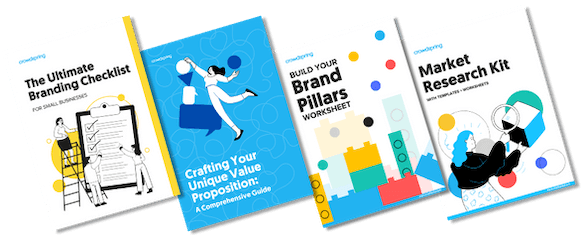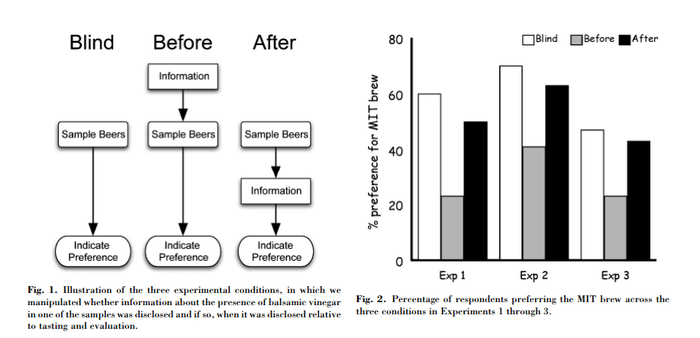13 Powerful Ways You Can Manage Customer Expectations Better To Grow Your Business Faster


Prospective customers look to your business to provide something they need or want.
This is the beginning of a critical story for your business.
And, starting with your very first interaction, this story can develop in one of three ways:
- You fail to meet their expectations.
- You meet their expectations.
- You exceed their expectations.
The first scenario will lead to an unhappy customer and poor word-of-mouth marketing.
Scenarios 2 and 3 will likely lead to a loyal new customer and positive word-of-mouth marketing.
The tricky part is that each customer supplies their own expectations. And they won’t necessarily tell you in advance about their expectations.
Psychologist and professor John A. Johnson, Ph.D. explains:
My research on moral psychology tells me that expectations among people are often based on an implicit social contract. That is, without actually verbalizing expectations about give-and-take in a relationship, people construct stories in their heads about legitimate expectations of each other. So, people in a relationship have a “deal” in which the specifics of the deal are never really talked about.
Having worked in retail and customer service (among other fields), I can tell you that people apply this logic to their interactions with businesses and people.
So, it’s in every marketer’s and business owner’s best interest to learn how to manage customer expectations effectively.
But, if this were truly as simple as it sounds, there would be many more happy customers worldwide.
Here are 13 ways to better manage your customers’ expectations, create loyal brand followers, and grow your business faster.
First impressions set subsequent expectations
We’ve all heard that first impressions are important.
Why?
When it comes to setting expectations, a first impression is powerful. This is because we tend to make snap judgments, whether or not we’re aware of it. And once we make those judgments, we unconsciously base our future decision-making on that judgment. This is known as the anchoring effect, and it’s an important principle of marketing psychology.
Your judgment about a situation becomes the expectation the next time you find yourself in a similar or identical situation.
And, those initial judgments tend to stick around because expectations are not just a state of mind. According to Loretta Breuning, Ph.D. (professor, author, and founder of the Inner Mammal Institute), expectations become a part of your physical being:
…expectations are surprisingly resistant to adjustment. Expectations are real physical pathways in the brain. Past experience built these pathways but new experience does not easily modify them.
Once a pathway has been established, it requires repeated exposure to new information to alter that pathway.
Moreover, improving a negative first impression is harder than tarnishing a positive first impression.
Nadav Klein and Ed O’Brien’s study at the University of Chicago investigated how difficult it is to reach what they call a”moral tipping point.” This is the point at which a person goes from being viewed as a good person to a bad person – or vice-versa. They explain:
…this moral tipping point is asymmetric. People require more evidence to perceive improvement than decline; it is apparently easier to become a sinner than a saint, despite exhibiting equivalent evidence for change.
In other words, rebuilding a positive reputation is hard when people already have negative expectations. And it’s easy to gain a negative reputation despite people’s positive expectations.
We expect businesses to be “in it for the money.” And so people are naturally inclined to be suspicious of businesses’ intentions.
So, if your business makes a poor first impression, most people won’t stick around to give you a chance to fix it.
Not when their hard-earned money is at stake.
Essential Branding Toolkit for Entrepreneurs
Build a stronger brand with our free guides. Get actionable insights to define your brand’s unique voice, understand your market, and stand out to customers. The guides are concise, actionable, practical, and tailored for the busy entrepreneur.

- The Ultimate Branding Checklist
- Crafting Your Unique Value Proposition
- Build Your Brand Pillars Worksheet
- Market Research Kit
Actionable tips for your business:
- If you’re starting a new business and writing a business plan, create a strong plan with compelling copywriting and a good design. Investors will judge your credibility, in part, on what they read in your business plan.
- Focus your marketing efforts on creating a positive first impression. Work with your marketing, sales, and customer support teams to make sure that they fully understand your efforts and can deliver on your marketing promises. Ensure that your company’s brand identity is strong and consistently presented at every customer touchpoint. The positive expectations generated from this first impression will prime your consumers to see your subsequent interactions in a positive light.
- If you’re starting a business and don’t yet have a known brand reputation, you have to work harder to help your customers identify and recognize your business. So, (much like a television pilot episode) provide enough background information to generate a good first impression. Be sure that your branding (including your company name and your company’s logo design) is clear, visually interesting, and memorable. And be sure your branding is consistent.
- Work hard to maintain your positive impression. Always deliver on your brand promises. Losing your good reputation is easy, and negative expectations are tough to overcome.
- And if your business has hit a wall and you’re struggling to grow it, consider whether it’s time for a brand refresh.
Magical thinking and what it means for you
Magical thinking is the false belief that something will happen just because you expect it to.
Magical thinking sounds fun.
And, in some instances, it can be.
But, magical thinking’s implications for your business may not be so fun.
Children subconsciously imbue their thoughts with the power to affect the world tangibly directly.
Many adults continue to believe this is possible to do. Dr. Johnson points out that:
…many normal adults continue to engage in various forms of magical thinking. Prayer can be a form of magical thinking. Witness the huge popularity of The Law of Attraction, which says that our thoughts attract events into our lives. For many of us, it is difficult to let go of the idea that expecting something to happen will make it happen.
Now, please don’t get me wrong. I don’t mean to suggest that your thoughts have no power to affect change – they do. Your thoughts can directly impact your actions.
However, your thoughts cannot make a bad product or service great or deliver the specific product you seek at your perfect price.
But that doesn’t stop people from reacting negatively when their expectations go unmet.
These negative reactions are unavoidable. According to Professor Wolfram Schultz, a neuroscientist at the University of Cambridge, dopamine levels are depressed in the brain if our expectations are unmet.
Unmet positive expectations make people feel bad.
Consumers bring their own expectations with them, and when those expectations go unmet, disappointment and displeasure follow.
Actionable tips for your business:
- It’s best to manage expectations for customers from the beginning of your interactions with them. This will help you to control the dialogue instead of scrambling to react to unrealistic consumer expectations. Be sure you understand the difference between empathy and sympathy.
- Make your marketing offers as clear as possible. Don’t make vague assertions that can be easily misinterpreted, leading to flawed expectations that work against you.
- Don’t make implications in your marketing that you can’t or won’t deliver. If you claim a 100% money-back guarantee, deliver that refund whenever requested.
- Maximize the impact of seasonal peaks. Holidays offer a prime opportunity to delight customers. So be sure to create the best possible customer experience when people are actively comparatively multiple vendors.
Negative expectations lead to negative perceptions
We’ve discussed how magical thinking can lead to unrealistic expectations and disappointment.
So, is it better to encourage customers to set their expectations lower so you’re more likely to meet them?
Yes, but be careful.
While it is good to create realistic expectations that can be reasonably met, it’s important not to lower expectations too much.
If you lower consumers’ expectations too much, instead of creating an easy-to-shop low hurdle, you may find yourself stuck in a ditch.
It turns out that people who approach a situation with a negative expectation often find their negative bias confirmed. You may have heard of this phenomenon – the self-fulfilling prophecy.
A team of Columbia University students confirmed this through their research study.
The study revealed that participants who were warned about an unpleasant “secret ingredient” (balsamic vinegar) in a beer showed the lowest preference for that beer than other participants who were not warned.
It turns out that the anticipation of a negative experience delivered a more negative experience. This is because our complete experience of an event is determined not only by our physical senses but by our psychological perception of the experience.
The Columbia research article makes this very clear:
The quality of an experience is jointly determined by bottom-up processes, which reflect characteristics of the stimulus impinging on the perceiver’s sensory organs, and top-down processes, which reflect the perceiver’s beliefs, desires, and expectations.
So, it’s important to consider the entire customer experience – sensory and perceived – to create the best possible results.
Actionable tips for y0ur business:
- Use your marketing language and visual design to set positive, realistic expectations whenever possible. For example, positive business taglines perform better than negative taglines.
- Lead with the good news. Highlight tangible product or service benefits early on and prominently feature special discounts or offers.
- Use customer testimonials and reviews to create anticipation for new customers that they will have a great experience.
- Review your website design to remove the friction that might make customers cranky before getting to the checkout page.
The power of “surprise and delight”
So far, we’ve focused on the downsides of expectations.
But don’t get discouraged – expectations aren’t all bad news.
As you’ve already guessed, meeting your customer’s expectations is good.
And, if you manage to exceed your customer’s expectations, the positive impact is even greater.
Cambridge’s Professor Schultz found physical evidence of this.
His research revealed a drop in dopamine levels (the neurotransmitter that controls the pleasure center in our brains) when our expectations are not met. He also confirmed that dopamine levels increase when we are pleasantly surprised by what Schultz calls a “positive prediction error.”
A positive prediction error is simply a fancy saying: “surpassed expectation.”
This is why surprising and delighting your customers is so powerful. By surpassing their expectations, you create a physical reaction that makes your customers feel good.
That kind of experience will make customers take notice, remember your brand, and keep them coming back.
Dopamine is the neurotransmitter that leads to habit-forming and addictive behavior. People are driven to seek ways to trigger their brains to release dopamine. Dr. Breuning explains:
Expectations are the core of our brain’s strategy for making sense of the world. Your brain is constantly generating an expectation and then comparing new inputs to it.
When our experiences match our expectations, we’re rewarded with a happy dopamine reward. When our expectations are disappointed, we lose our happy dopamine and receive the stress hormone cortisol instead.
Our biology controls our reactions. And it’s hard to fight biology.
Actionable tips for your business:
- Set clear and attainable brand promises – and meet them every single time. Consistent, reliable, good service over time is surprising in and of itself.
- Find creative ways to go above and beyond. Provide a surprise-free add-on gift with their purchase. Design a fabulously fun “unboxing” process to make your product’s arrival even more special. Send a handwritten thank-you note for their purchase along with a discount coupon for their next purchase.
- Try to anticipate related customer needs and do your best to satisfy them. For example, if a customer purchased several packs of diapers in the largest available size, consider sending an invitation to try out your new pull-ups with a coupon code for a nice discount.
If you want to create the best possible customer experience, your marketing has to play a proactive role in defining and meeting or exceeding your customers’ expectations.
If interacting with your business regularly produces pleasurable reactions, you’ll see customers returning repeatedly.
Design Done Better
The easiest way to get affordable, high-quality custom logos, print design, web design and naming for your business.
Learn How to Grow Your Business With Beautiful Design

